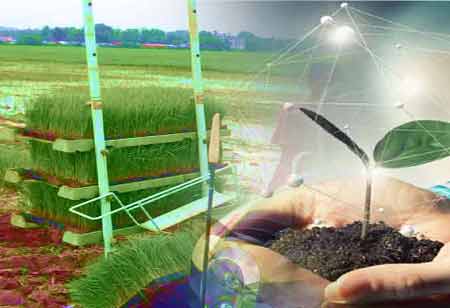Thank you for Subscribing to Agri Business Review Weekly Brief
Agricultural Developments With Space Farming.
Farming is a physical industry where a combination of experience, knowledge and hard work determine the successful yield of crops and livestock.

By
Agri Business Review | Thursday, November 17, 2022
Stay ahead of the industry with exclusive feature stories on the top companies, expert insights and the latest news delivered straight to your inbox. Subscribe today.
Recently, there has been a giant rise in using on-the-ground technologies.
FREMONT, CA: Farming is a physical industry where a combination of experience, knowledge and hard work determine the successful yield of crops and livestock. The modern farmer still can use high-tech and data to tip the hand on their behalf.
Over the years, there has been a giant rise in the use of on-the-ground technologies, for example, driverless tractors, drones and sensors. These technologies lessen the need for manual labor and allow better-informed decisions. In recent years, farmers have concentrated on satellites to enhance agriculture management.
Governments and large funding bodies see using satellites in agriculture as one potential solution to the world’s future food production issues. And supporting them.
Daily Earth Images
Not to be left out, large private organizations are also jumping on the farming from space craze. Planet Labs is presently working on making it smaller. More cost-effective satellites are established in bulk to watch the earth constantly. The company strives to have sufficient satellites in orbit in 2016 to take images of the entire earth daily.
With such real-time imagery, the potentials are limitless – the capacity to examine a single crop, or even a whole country, over time and make comparisons to correct or control issues before they happen. For example, consider observing deforestation and the outcomes of a drought or a flood as it occurs and be able to take curative action.
Farming In Space
Around the world and the solar system, governments and private organizations are already working on solutions for growing produce in space, space stations and even other planets.
Space Shuttle Farming
NASA has done some experimentation in the space farming arena. Their project, the Vegetable Production System (Veggie), is an adaptable plant growth unit capable of producing salad-type crops to offer the crew a tasty, nutritious, and safe source of fresh food and a tool to endorse relaxation and recreation. The Veggie offers lighting and nutrient delivery but uses the cabin environment for temperature control and as a source of carbon dioxide to boost growth.
Like many other indoor farms, the Veggie system uses LED lights and sensors that text the astronauts when the crops require watering. NASA has designed this system to supply a sustainable food source for the staff on board the space station and is about to harvest other fruits, vegetables and plants in the coming days.
While all these experiments don’t imitate the atmospheric conditions in space, on Mars or the moon, they show the efforts going into this new field of space farming, and there’s a glimpse of what may be possible in the future.
Whether farming from space or in space, as technology betters and costs lower, these projects and experiments are bound to continue.





